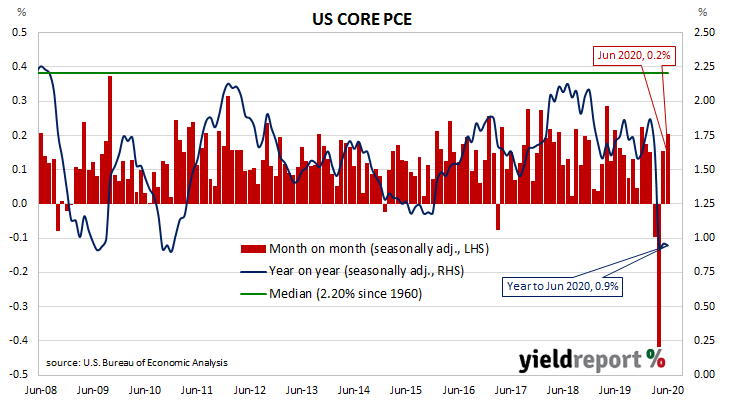Summary: US Fed’s favoured inflation measure rises 0.2%; in line with market expectations; previous month revised up; annual rate eases; long-term Treasury bond yields lower.
One of the US Fed’s favoured measures of inflation is the change in the core personal consumption expenditures (PCE) price index. After hitting the Fed’s target at 2.0% in mid-2018, the annual rate then hovered in a range between 1.8% and 2.0% before it eased back to a range between 1.5% and 1.8% through 2019. It then plummeted in April 2020.
The latest figures have now been published by the Bureau of Economic Analysis as part of the June personal income and expenditures report. Core PCE prices increased by 0.2% for the month, in line with consensus expectations and the same result as May’s increase after it was revised up from 0.1%. On a 12-month basis, the core PCE inflation rate slowed from 1.0% in May to 0.9%.
Longer-term US Treasury yields finished modestly lower. By the end of the day, the 10-year yield had lost 3bps to 0.53% while the 30-year yield finished 1bp lower at 1.20%. The 2-year yield remained unchanged at 0.11%.
The core version of PCE strips out energy and food components, which are volatile from month to month, in an attempt to identify the prevailing trend. It’s not the only measure of inflation used by the Fed; it also tracks the Consumer Price Index (CPI) and the Producer Price Index (PPI) from the Department of Labor. However, it is the one measure which is most often referred to in FOMC minutes.

